This was one of my favorite stops.
This lighthouse is located in Bailey's Harbor.
It was established in 1869, and automated in 1944.
The waters were beautiful while the air was cold and the winds were blustery.
There is a causeway to traverse to get to the island.
Sometimes it is slightly flooded and other times there is quite a bit of water.
Today it was about a foot deep.
We were taken to the island by a tractor pulled wagon.
That was a thrill riding through Lake Michigan on a wagon.
The location of the lighthouse is at the end of a narrow peninsula
jutting out into Lake Michigan between North and Moonlight Bays.
Due to this location, it regularly experiences major wind and heavy storms off Lake Michigan.
The lake, at times, can rise enough to flood over the narrow causeway
and the peninsula actually becomes an island.
(https://www.us-lighthouses.com/cana-island-lighthouse)
Currently used as an active navigational aid
under the jurisdiction of the United States Coast Guard and a museum,
it was added to the National Register of Historic Places in 1976.
The grounds are well kept and very nice.
Views around the lighthouse to the water's edge.
Ninety-seven steps to the top of the lighthouse.
Looking out the port holes on the way up.
Views from the balcony of the lighthouse.
It was a cold and windy day, especially felt at the top.
Time to descend the tower.
It was just as scary going down.
Did I say I don't like heights?
Looking up into the light and lens.
The light itself is a third order Fresnel lens that was made in France.
It used to be fueled by lard, later it was fueled by kerosene, then by acetylene,
and now by electricity.
The round ball at the top is the vent that removed the smoke and soot from the oil lamp.
Each night oil had to be carried to the top of the tower
by the keeper or his assistant to keep the light fueled.
When the light first became electric in 1945, it was by an engine driven,
2 kW generator, and batteries that powered the 100 watt, 32 volt bulb.
A powerline was finally installed in the 1960s, and the bulb was switched to a 110 volt, 200 watt bulb.
Four bulbs are mounted in a rack that allows for the next bulb to light if the one before it burns out.
The light itself is a third order Fresnel lens that was made in France.
It used to be fueled by lard, later it was fueled by kerosene, then by acetylene,
and now by electricity.
The round ball at the top is the vent that removed the smoke and soot from the oil lamp.
Each night oil had to be carried to the top of the tower
by the keeper or his assistant to keep the light fueled.
When the light first became electric in 1945, it was by an engine driven,
2 kW generator, and batteries that powered the 100 watt, 32 volt bulb.
A powerline was finally installed in the 1960s, and the bulb was switched to a 110 volt, 200 watt bulb.
Four bulbs are mounted in a rack that allows for the next bulb to light if the one before it burns out.
(https://en.wikipedia.org/wiki/Cana_Island_Light)


















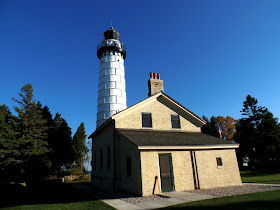
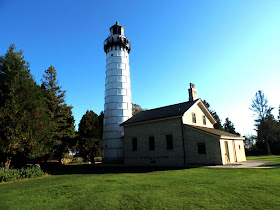




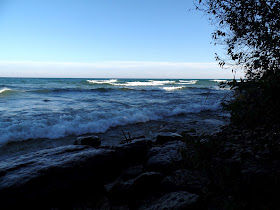
















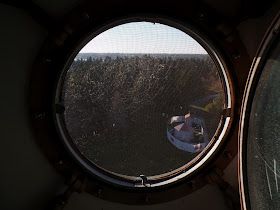









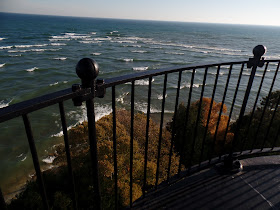


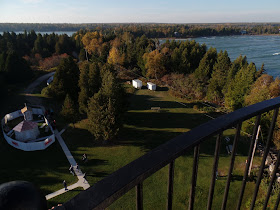


No comments:
Post a Comment